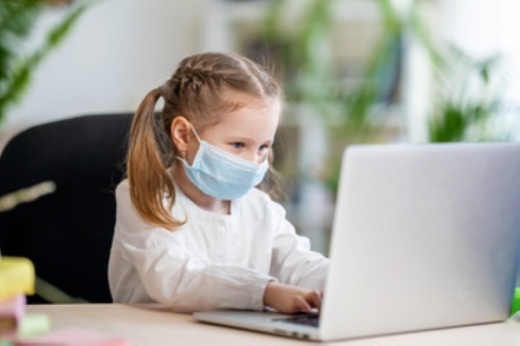All school districts in Texas were required to offer either synchronous, asynchronous or blended learning models this fall, Assistant Superintendent for Academic Services Katrina Hasley said. The synchronous model involves students and teachers interacting virtually in real-time, while asynchronous learning does not require teachers to be virtually present. While the district is proposing a primarily asynchronous model, it will involve a combination of both real-time instruction and self-guided learning, Hasley said.
Officials decided on this plan after hearing feedback from the district community, Hasley said.
“Overwhelmingly, teachers, staff, parents and students wanted live interaction in contact with teachers, which is one of the reasons we developed a system that had both elements,” she said. “However, we also need to consider methods of providing instruction and support for students who are unable to connect during the live instruction.”
The district is required to submit its remote learning proposal to the Texas Education Agency by Oct. 1 in order to secure funding, Hasley said. The plan was unanimously approved by trustees.
The first day of school in Plano ISD was held virtually Aug. 12; however, nearly half of PISD students will return to campuses when they reopen Sept. 9.
The district will continue to implement new practices as the school year goes on. For example, officials are developing a program that will allow teachers to record lessons for absent students.
Parents and students have access to a weekly document that gives an overview of all assignments and expectations for the week, Hasley said. Students enrolled in remote learning follow the same daily schedule as they would at their home campus.
Sample schedules for all grade levels can be found here, including for high school and senior high students participating in the district’s hybrid plan, which involves on-campus instruction two days a week and remote learning for the rest of the week. Those students will participate in asynchronous learning on days they are not on campus. Mondays, for example, are entirely dedicated to asynchronous, remote learning. Self-guided learning will still involve new content, Hasley said.
“Students on an asynchronous day will still encounter new material, and that will be either covered or touched upon on their next face-to-face day,” she said.
Course material can be accessed through Google Classrooms and the PISD web desk, Hasley said. Most textbooks are available online; however, some will be provided by the district.
Student engagement is tracked through Google Classroom participation, teacher-student engagement during synchronous activities and through assignments and submissions, Hasley said.
“If a student was not able to log in during a synchronous time—maybe their connectivity wasn't working well enough at that point in time—as long as they're able to engage in the learning for that content area sometime during that day, they can be counted present,” she said.
Engagement guidelines and expectations are published on the district’s website for parents and students.





